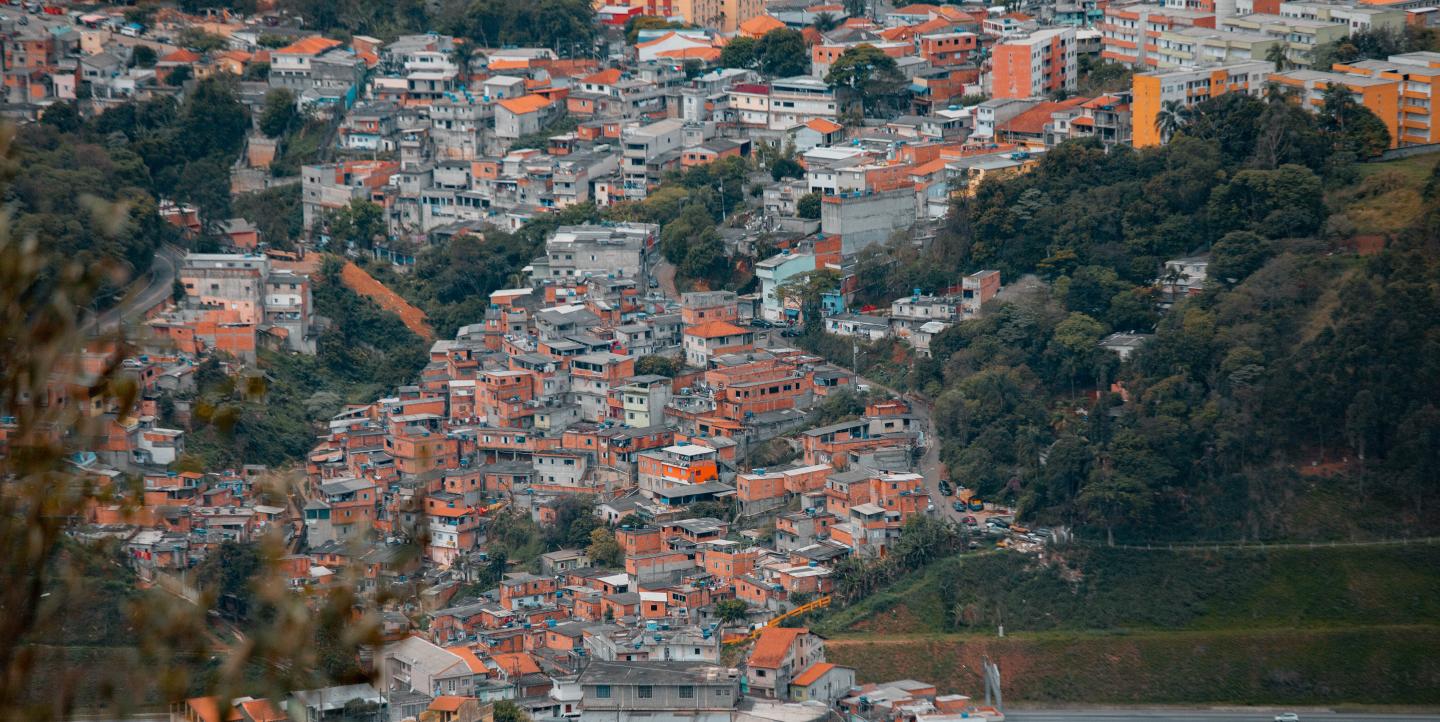Layered atop the hills on the edges of Rio de Janeiro are favelas, working-class neighborhoods each with their own unique identity, culture and demographics. These communities are also largely disadvantaged: spotty internet connectivity, a lack of clean water, organized crime and police violence are all daily challenges that residents face, but rarely see covered by mainstream Brazilian news outlets.
To meet this need, a new generation of Brazilian journalists from the country’s favelas, quilombos and other “peripheral communities” just outside major cities – which don't receive the same level of support, infrastructure, or security as the rest of the city – have launched platforms to center the experiences and perspectives of its residents and advocate for justice for their communities. “The goal is to show within rather than without,” said Raimundo José, a reporter at TV Quilombo during a panel in May at Festival 3i in Rio de Janeiro. “We strongly believe that there is nobody better to tell our stories than ourselves.”
It’s what is called “peripheral journalism” in Brazil, explained Daiene Mendes, co-founder of Favela em Pauta: “The idea is to put forth an alternative to elite-driven, top-down reporting that can feed into the biases and stereotypes of audiences. Instead, the aim is to report 'from the people, to the people.'"
At the 3i Festival, three peripheral journalists discussed how their reporting centers residents of their communities. I also spoke to Mendes about the importance of hearing from voices within peripheral communities, and how the approach can serve as a model for community-based journalism elsewhere.
History of peripheral journalism
Peripheral communities in Brazil have been molded by the country’s unique history. Rural exoduses from the countryside into major cities in the 1970s and ‘80s gave rise to today’s favelas, while quilombos have been formed over centuries by escaped slaves and their descendants. Today, Brazil has over 11,000 favelas and 6,000 quilombo communities across the country. These communities are growing, too: today, they're home to approximately 16 million people, up from 11 million in 2010.
In 2002, relations between mainstream Brazilian press and peripheral communities collapsed following the tragic murder of Brazilian journalist Tim Lopes in the Vila Cruzeiro favela in Rio. Police severely restricted access to the favela in the incident’s aftermath. “The relationship between press coverage and the favela changed,” Mendes said. “Now, in order for journalists to enter a favela, [it is] behind the wall of the police. That fundamentally changes how you see the favela.”
After Lopes’ murder, stories about favelas took on a security lens, highlighting organized crime, murders and police actions at the expense of reporting on other daily issues, like access to running water, Mendes explained. With access restricted, voices from within the favela were silenced. “The official version of what happened in the favela became the police version,” Mendes said.
This was especially true during the 2010 police raids of Rio’s favelas, which sought to “pacify” organized crime in the lead-up to the 2014 Brazilian World Cup. The raids resulted in widespread violence, including police brutality. They served as a wake-up call for young journalists and communicators in the favelas. “The way we are being treated is so brutal, and so violent, you need to be able to record to have evidence,” Mendes said.
Peripheral journalism emerged as a response, reporting from the unique perspectives of the communities themselves while highlighting injustices rarely covered in traditional media.
“Traditional media is looking at the favela from the outside, but the coverage is now coming from the inside of the favela,” Mendes said.

Panelists at the 3i Festival in Rio de Janiero
Meeting a need
By reporting on racism, rights violations and police brutality in their communities, peripheral journalists are acting as more than just journalists. They’re defenders of their communities.
“There is no distance between me and the place – I am that space, I am a part of it,” said community communicator and journalist Gizele Martins, who is from the Maré favela in Rio. “Those who are distant don’t understand who we are and what we do.”
The connection with space gives peripheral journalists a perspective journalists from traditional media outlets often lack. “If I interview someone, I see them as myself – the same, equal – this brings their identity beyond the stereotypes of [their] communities,” Martins said.
The importance of communicators in peripheral communities became further apparent during the height of the COVID-19 pandemic. Even as then-President Jair Bolsonaro was downplaying the crisis, peripheral journalists were communicating the severity of the virus and the need for vaccines. “Communication is a product in [the media] industry, but needed in the periphery,” Mendes said. “That is the difference. [Those who] are using the communication need the communication.”
Empowering communities that have long been marginalized and subject to racism and stereotypes is part of a larger goal to fight for their survival and dignity. “TV Quilombo shows a voice that has always been there, has already existed, but has been silenced especially by the large media outlets,” said José of the quilombo communities in Brazil his outlet serves. “It increases their idea of identity, their feeling of belonging.”
For peripheral journalists, this kind of work isn’t just important – it’s existential. “We are rescuing our history, our identity. When we rescue this we are defending ourselves and our communities,” Martins said. “It is our life we are defending through this journalism.”
Toward a community-driven future
Peripheral journalism lays a foundation for a more community-driven, responsive and responsible future for Brazilian journalism overall. The ability to innovate on a shoestring budget, for example, is one aspect that other community outlets can emulate.
“We don’t put ourselves in the context of being smaller. We are much better, we reinvent ourselves based on our own difficulties,” Martins said.
José recalled how TV Quilombo began with a single cardboard-constructed camera, and when needing aerial footage, used a tall bamboo stick to simulate a camera drone. “For each problem, we created a new solution,” he said.
For Mendes, peripheral journalism represents one component of a new kind of plural “journalisms,” which packages peripheral reporting alongside community-based and Indigenous journalism.
“In my entire life, I saw disinformation about my culture, my people,” Mendes said. “Community, periphery, local – all of these [are] categories of trying to think of a new system of communication able to share the memory of being people, of being human.”
Or, as São Paulo-based peripheral journalist Tony Marlon said in response to comments that nobody reads the newspaper anymore: “That nobody is my mother. [...] “These are our parents, our mothers, our aunts and uncles.”
“Nada de nós, sem nós,” he said. “Nothing about us, without us.”
Photo by danilo.alvesd on Unsplash.


